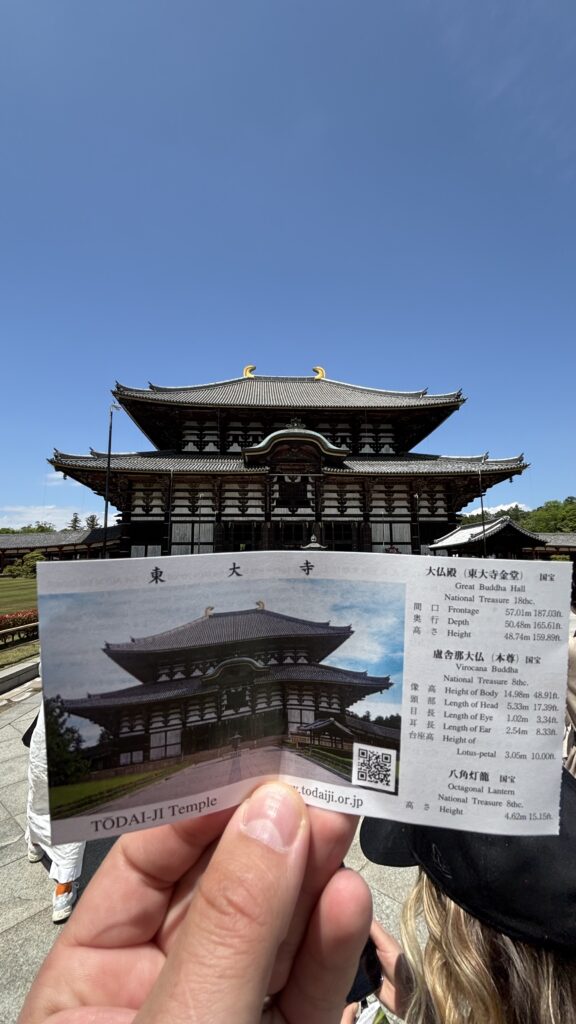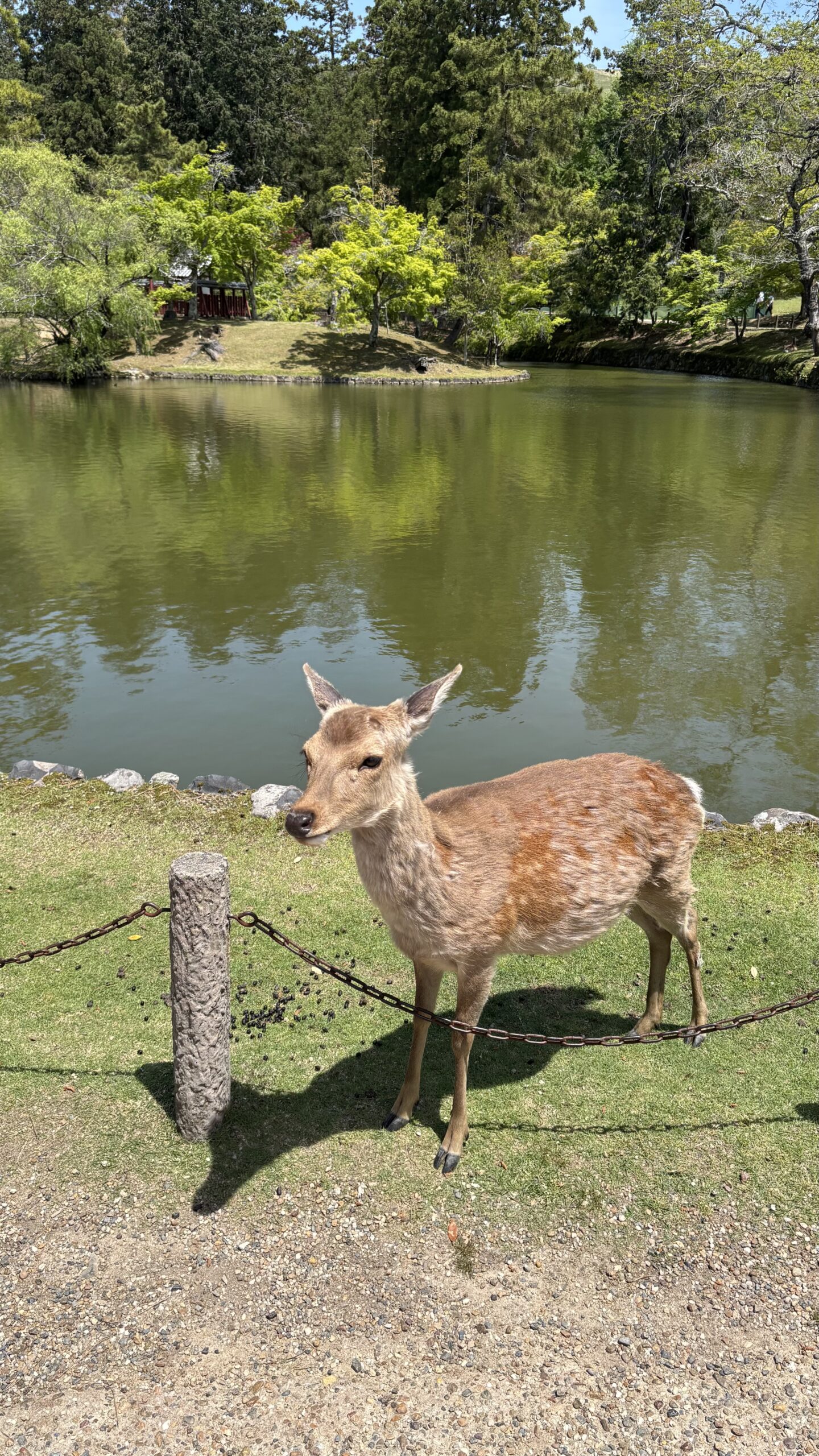Just under an hour from Kyoto or Osaka by train, Nara is a city where history, nature, and spirituality intertwine. While most visitors come for its famous freely roaming deer, Nara offers so much more—ancient temples, tranquil gardens, imperial history, and a deep cultural legacy as Japan’s first permanent capital.
Getting to Nara
Nara is easily accessible from two of Japan’s most visited cities:
- From Kyoto: Take the JR Nara Line or Kintetsu Line (about 35–50 minutes).
- From Osaka: Take the JR Yamatoji Line or Kintetsu Nara Line (also around 35–50 minutes).
Most of Nara’s key attractions are within walking distance from Kintetsu-Nara Station, making it an ideal day trip destination.
Meet the Deer: Nara’s Most Famous Residents
Nara Park is home to over 1,000 sika deer, considered messengers of the gods in local Shinto belief. These deer freely roam the park and surrounding temple areas, often bowing politely to visitors in exchange for shika senbei—special rice crackers you can buy on-site.
While they’re cute and seemingly tame, remember they’re still wild animals. Feeding is encouraged only with the designated crackers, and signs in the park offer guidance on safe interaction.
Temples, Shrines, and Timeless Architecture
Nara is filled with spiritual landmarks that have stood for more than a millennium. Highlights include:
- Tōdaiji Temple: Home to the Great Buddha and one of the largest wooden buildings in the world.
- Kasuga Taisha Shrine: Famous for its thousands of stone and bronze lanterns, lit during seasonal festivals.
- Hōryū-ji Temple: A UNESCO World Heritage Site and one of the oldest wooden structures still standing.
- Kōfuku-ji Temple: One of the original “Seven Great Temples” of Nara, known for its towering five-story pagoda.
In total, the city houses more than 2,000 religious sites—a true testament to its spiritual heritage.

Gardens and Parks: Calm Within the City
Nara Park is more than just a deer haven. It features scenic ponds, sakura trees, and open lawns perfect for a relaxed stroll or a spring hanami picnic. Nearby, Yoshikien Garden offers a more secluded escape with three distinct garden styles—ideal for those seeking tranquility.
Heijō Palace: Glimpses of Imperial Grandeur
Nara was once the capital of Japan during the Nara period (710–794). The Heijō Palace site preserves this imperial legacy, with reconstructed structures like Suzaku Gate, exhibition halls, and interactive displays that shed light on court life over 1,300 years ago.
Museums and Cultural Spots
Explore deeper meanings of Buddhist art and Japanese history at the Nara National Museum, or dive into folklore and martial history at the Ninja Museum. The city’s cultural institutions reflect the richness of Japan’s spiritual and artistic heritage.
Traditional Flavors and Festivities
Beyond the temples and deer, Nara is also known for its locally brewed sake, charming old streets, and traditional eateries. Time your visit with events like the Kasuga Lantern Festival for a truly magical experience, as thousands of glowing lanterns illuminate the night.
Nara is not just a place to visit—it’s a place to feel. From bowing deer to towering temples, from peaceful gardens to centuries-old shrines, Nara captures the essence of Japan’s past and present. Whether you’re making a quick stop or planning a full-day exploration, it’s a destination that stays with you long after you leave.

